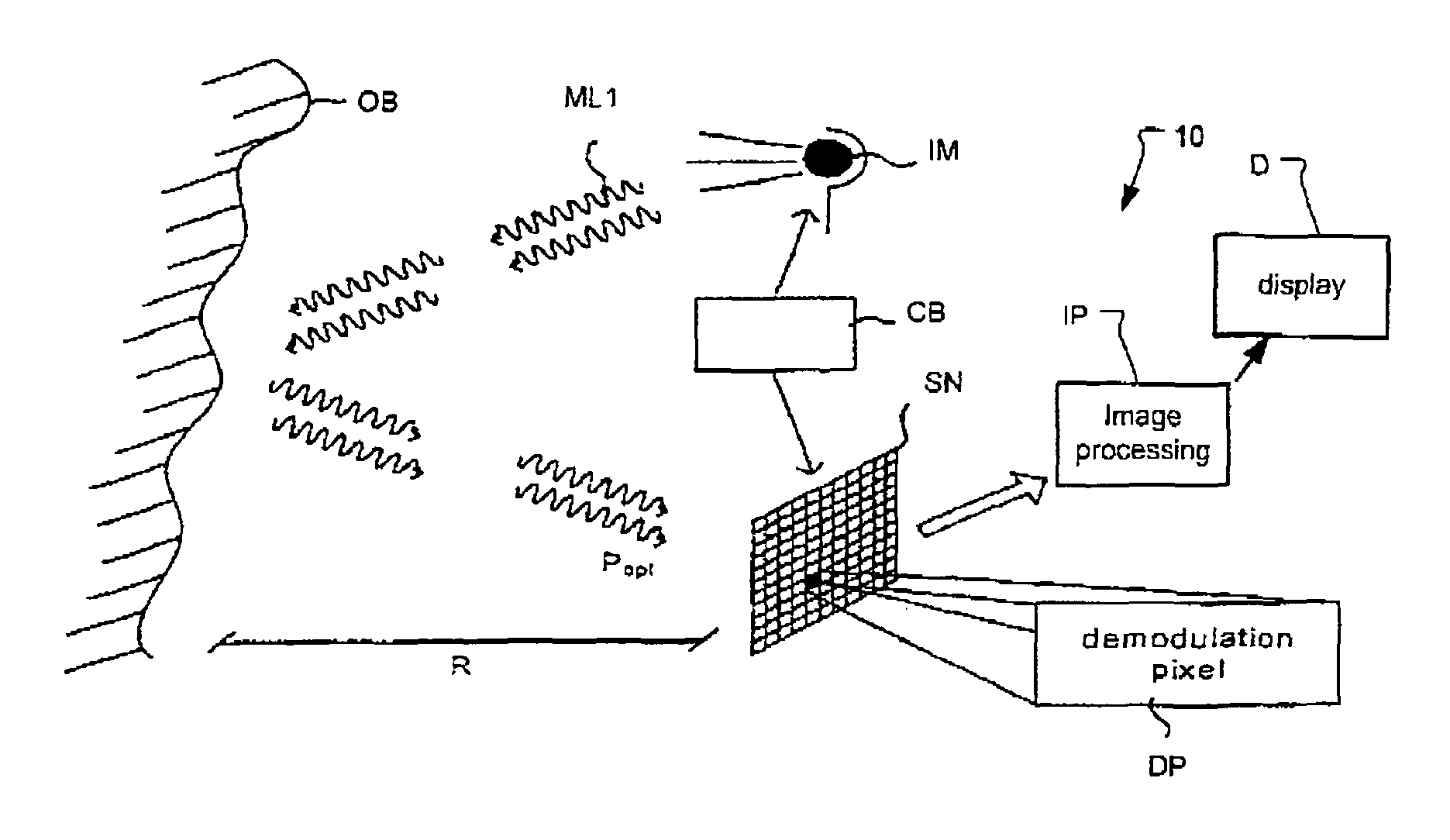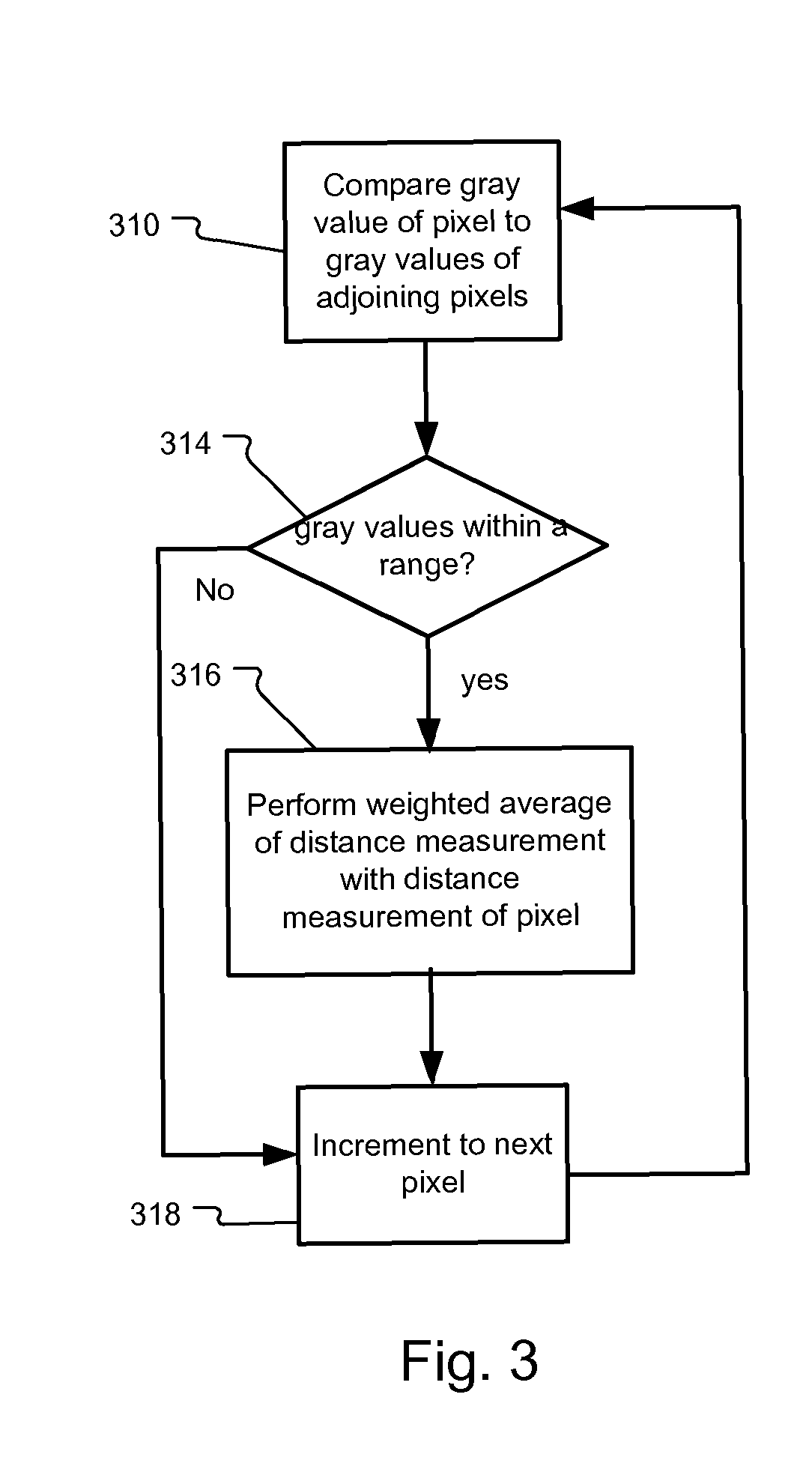Adaptive neighborhood filtering (ANF) system and method for 3D time of flight cameras
a technology of neighborhood filtering and flight cameras, applied in the field of adaptive neighborhood filtering (anf) system and method for 3d time flight cameras, can solve the problems of reducing the performance of such demodulation pixels, difficult to realize high frequencies when many pixels are controlled, and poor fill-factor of like structures
- Summary
- Abstract
- Description
- Claims
- Application Information
AI Technical Summary
Benefits of technology
Problems solved by technology
Method used
Image
Examples
first embodiment
[0031]FIG. 3 illustrates the ANF in which the image processor IP steps through the responses of the demodulation pixels DP of the image sensor SN. If the neighboring pixels have similar amplitude or gray values, the probability that the pixels are in the same plane is deemed high. Hence, such pixels are spatially averaged in distance information with higher weight.
[0032]In more detail, the image processor compares the gray or amplitude value of a pixel to the gray or amplitude values of adjoining and / or adjacent pixels, in step 310. The pixels are characterized by a two dimensional array of n by m pixels in the image sensor. In one example, the processing begins with pixel (x0,y0) and ends with pixel (xn,ym).
[0033]It determines whether any of the gray values of the adjacent pixels are within a range around the gray value of the current pixel in step 314. In one example the gray value of pixel (xa,yb) is compared to the gray values of pixels (xa+1,yb), (xa−1,yb), (xa,yb+1), and (xa,y...
second embodiment
[0035]FIG. 4 illustrates the ANF in which the image processor IP steps through the responses of the demodulation pixels DP of the image sensor SN. If the neighboring pixels have similar distance values, the probability that the pixels are in the same plane is rather high. Hence, such pixels are spatially averaged with higher weight.
[0036]In more detail, the image processor compares the distance value of a pixel to the distance values of adjoining and / or adjacent pixels, in step 410. In one example the distance value of pixel (xa,yb) is compared to the distance values of pixels (xa+1,yb), (xa−1,yb), (xa,yb+1), and (xa,yb−1).
[0037]It determines whether any of the distance values of the adjacent pixels are within a range around the depth value of the current pixel in step 414. The distance information is averaged with the adjacent pixels that are within the range in step 416. Usually the average is weighted average here also. The range is selected in response to the gray value of the p...
PUM
 Login to View More
Login to View More Abstract
Description
Claims
Application Information
 Login to View More
Login to View More - R&D
- Intellectual Property
- Life Sciences
- Materials
- Tech Scout
- Unparalleled Data Quality
- Higher Quality Content
- 60% Fewer Hallucinations
Browse by: Latest US Patents, China's latest patents, Technical Efficacy Thesaurus, Application Domain, Technology Topic, Popular Technical Reports.
© 2025 PatSnap. All rights reserved.Legal|Privacy policy|Modern Slavery Act Transparency Statement|Sitemap|About US| Contact US: help@patsnap.com



